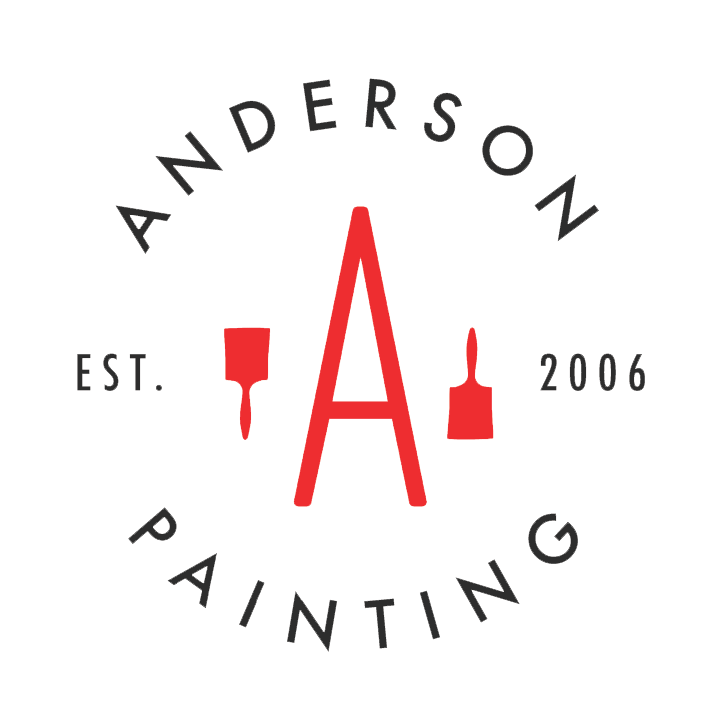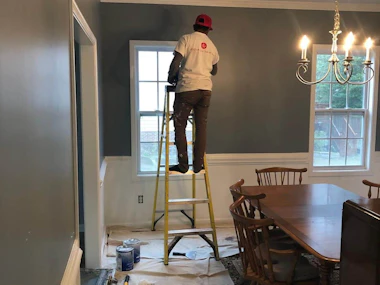Choosing the Right Colors for Commercial Spaces: Psychology and Branding

The paint colors you choose for your commercial space can make or break your business. Make sure to pick a color that will enhance your business’ image and reinforce your brand with the help of this guide.
Understanding Color Psychology
The first thing you should do before choosing colors for your brand and commercial space is to learn what color psychology is in commercial design. The psychology of color is so crucial that it’s a mandatory field of study for interior designers.
Color psychology is the study of how color affects human behavior and emotions. Yes, the influence of colors goes beyond aesthetics. Colors can influence mood, evoke emotions, and stimulate physiological responses. The colors you choose can significantly affect your consumers’ impressions of your brand and even their decision-making.
Different colors affect people in a variety of ways, but there are a few common associations:
Red
Red is generally associated with passion, energy, and excitement. It’s a strong and energetic color that will help you achieve a dynamic and lively interior vibe. However, it can become overpowering and visually exhausting, so use it strategically.
Yellow
Yellow is associated with happiness and can give off an invigorating and uplifting effect. This color is a good option for infusing a sense of well-being and optimism into a room. With too much saturation, however, yellows can also strain the eyes.
Blue
Blue can have a strong calming effect. It also suggests trust and confidence, making it a great choice for spaces designed for relaxation. However, blue also tends to become cold and impersonal, so you must be careful when using it.
Green
Green also has a strong calming effect while suggesting safety, abundance, and nature. It is usually used to impart a sense of freshness to an interior.
White
White spells purity and cleanliness. It’s great for creating a minimalist interior and making a space appear larger. However, too much of it can become boring and depressing. White surfaces also easily reveal dirt and scuffs.
Black
Black looks mysterious and sophisticated if used appropriately. Otherwise, it can make a space look ghastly or morbid. Darker tones also make a space “shrink,” so bear this in mind before painting it black.
Each color has many variations depending on its saturation, shade, and the way it reflects light. These attributes can change how people react to a color. For instance, lighter shades can make a space look relaxing and delicate. By contrast, darker shades are deeper and richer.
Identify Colors That Represent Your Brand and Core Values
Let your brand and core values guide you in picking colors for your commercial painting project. List your company’s values, and find the color that best represents them. However, make sure to research all associations with the color.
The same color can have different meanings in different scenarios. For example, red connotes energy for restaurant brands but may be associated with danger in pharmaceutical companies. To be on the safe side, consider the color choices of some big players in your industry.
Think About Your Target Market
Is there a specific group of individuals you want to attract? What are the color preferences of your target demographic? While color psychology is crucial, you should also consider your target market’s preferences.
A store that caters to young individuals will be more likely to benefit from using brighter and more vibrant colors. By contrast, a law office would consider neutrals or browns since these colors reflect a sense of security, prestige, and trust.
Create a Balanced Color Palette for the Interior
One of the simple ways to get a perfect balance in your color scheme is by using the 60-30-10 rule. It suggests using a primary color to paint 60% of your commercial space, a secondary color for 30%, and accents for the remaining 10%.
Use the color you think best represents your brand and values as the dominant color. For the color that will take up 30% of the space, you can use one from your interior décor. But make sure the color still complements the dominant color palette. Similarly, you can use your décor scheme to determine an accent color.
With this three-color rule, you can create a balanced color scheme. It also prevents overusing colors, which often makes the room appear visually confusing and overwhelming.
Incorporate Accent Colors
Accent colors are supplementary colors that usually complement or contrast the primary colors used in a space. They improve a color scheme or liven up an otherwise monochromatic space.
When done right, accent colors can make your commercial space feel cohesive and harmonious. But if you overdo it, your space can end up looking gaudy. The key to incorporating accent colors is using varying shades sparingly.
If you feel overwhelmed with accent color options, a skilled and experienced commercial painter can help you experiment and determine the right color to boost your space’s appearance.
Balance Warm and Cool Hues
Another thing to consider when choosing commercial building paint colors is the hue. Various hues have different effects.
Let’s look into warm and cool hues. Warm colors consist of red, yellow, orange, and a combination of these or similar colors. They tend to make you think of heat and other warm things. In terms of effect, warm colors can make huge spaces feel cozier.
On the other hand, cool colors consist of green, blue, purple, and their hybrids. They often remind us of the sky and water, hence the name. Cool colors can be calming and soothing and also make small spaces look larger.
Although warm and cool hues exude contrasting effects, it’s possible to use both in your commercial space. The key is getting the balance right. Using too many warm tones may make the space feel overwhelming. By contrast, too many cool hues may make your interior boring.
By far, the easiest way to strike the perfect balance between cool and warm hues is to follow the 80/20 rule. Paint 80% of the space with your preferred hue. Use the other hue or neutral shades to paint the remaining space.
Consider the Local Environment
Before committing to a color scheme, find out whether there are color regulations that limit color choices in the commercial area. It’s better to be mindful of the existing rules and respect the district’s landscaping and architectural standards.
If there are no rules, you’re free to choose whichever colors perfectly convey your business values. Consider looking around your district to see the best exterior paint colors for commercial buildings.
Consult a Color Professional
Choosing a paint color for a commercial space is a significant decision influencing the environment for customers and employees. By understanding color psychology, considering your brand, core values, and target market, and determining the best way to use each color, you can make the best decision for your business.
But if you still struggle to pick a paint color for your commercial space, consider seeking inspiration from various sources, including your competitors’ spaces, magazines, and online galleries. You can also work with an experienced commercial painter to help you determine the best commercial building paint color combination.
Anderson Painting’s professionals have years of experience and can give valuable insights into your color choices. The team is dedicated to helping each client create a cohesive design tailored to business-specific needs. With the team’s guidance and skill, you can have confidence that your commercial space paint will look stunning and represent your brand well.
Need help picking colors and painting your commercial space? Feel free to reach out to our team.




